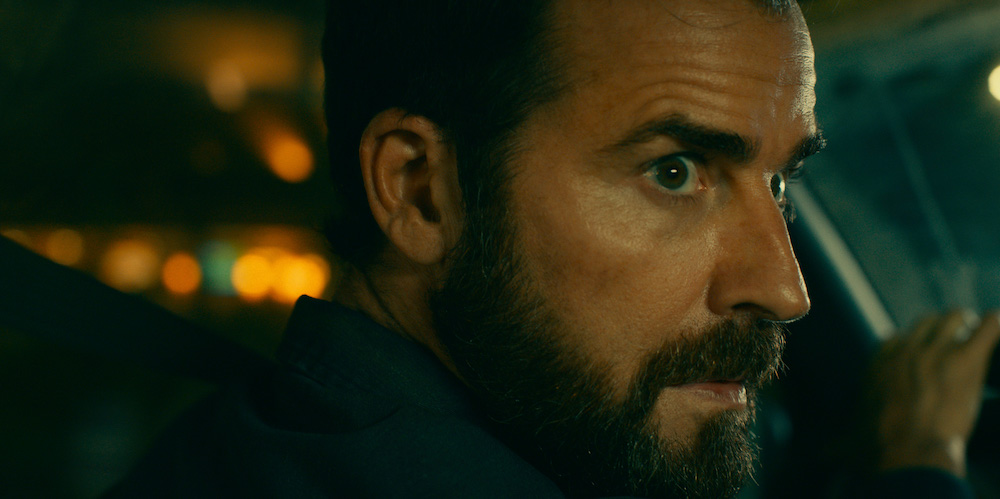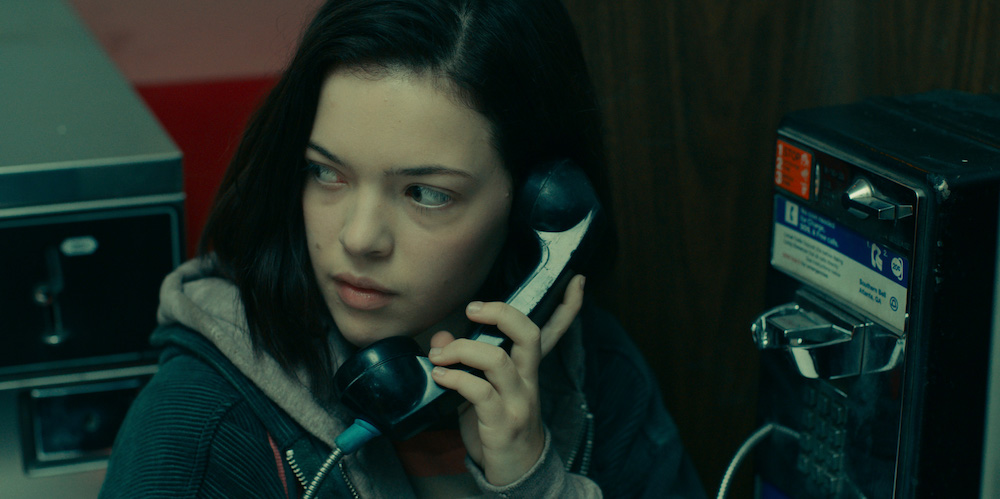The first two episodes of “The Mosquito Coast,” currently streaming on Apple TV+, kicked off with a probing camera that helped convey the eccentric mind of inventor Allie Fox (Justin Theroux) and the perilous journey he’s forced to take with his family in pursuit of his mad dream. In the opener, the camera snakes through his steampunk refrigeration system that converts heat to ice, and, in the follow-up episode, the camera tracks a butterfly landing on top of a Coke can and then follows its flight through the urban emptiness, foreshadowing Fox’s path.
It was part of director Rupert Wyatt’s visual plan with cinematographer Alex Disenhof to keep us in a state of perpetual motion, as Allie, wife Margot (Melissa George), teenage daughter Dina (Logan Polish), and son Charlie (Gabriel Bateman) take flight from the American Southwest to Mexico when they are pursued by government agents. “The propulsive movement sets up a theme that we tried to keep throughout the series, following this family and taking us to a new place,” Disenhof said.
The cinematographer shot with the Alexa LF mini with DNA primes to convey the show’s epic scale in large format. However, he begins intimately with the opening traveling shot through Fox’s invention, which was done practically at the beginning and end, but with the twisting and turning through the mechanism in CG. “We used a probe lens and built an opening in the box that you could push the lens through,” Disenhof continued. “As ice pumps out, that was in camera using a different kind of lens.”

Justin Theroux in “The Mosquito Coast”
Courtesy of Apple TV+
This immediately sets up the style of the camera, which introduces the Fox homestead with a helicopter shot surveying the valley, followed by drone shots that hone in on Allie. “It was important for Rupert that the Fox home felt like a place you didn’t want to leave, an oasis in the middle of nowhere,” Disenhof added. “But when they go on the run, you felt a sense of loss. We pumped in a lot of hard light through the windows.”
Disenhof worked out a visual arc for the seven-part story with Wyatt, tracking the warm palette of the homestead (shot in Fillmore, California), to the darker urban landscape nearby, to the bleached out-looking desert border, to the lush and tropical final destination in Mexico (shot in Mexico City). “It was important for Rupert that the Fox home felt like a place you didn’t want to leave, an oasis in the middle of nowhere,” Disenhof added. “But when they go on the run, you felt a sense of loss. We pumped in a lot of hard light through the windows.
“For our night work, I was inspired by [the late cinematographer] Robby Müller’s work in ‘Paris, Texas.’ We wanted a distorted view of Allie’s America, which is gritty, dark, messy, but still having bold colors using mixed color temperature lights [old sodium street lights] and playing with color contrast. It’s a slightly pushed reality in a place that hasn’t caught up yet with the clean modern time of LED lights.”
The camera also follows Allie and Charlie through a magnificent junkyard (shot in Mexico), where he explains the disposable nature of consumerism and his bitterness about the waste. “Rupert was keen to create an environment that reflected Allie’s philosophy,” Disenhof said. “Production designer Rafael Mandujano designed some of the hills and added things here and there, but what you see is mostly in camera.”

Justin Theroux in “The Mosquito Coast”
Courtesy of Apple TV+
Another memorable traveling shot occurs when Allie pulls up to a train station in search of Dina, who’s run away. “We had two operators, one carrying a Ronin rig, and the other operating the wheels,” the cinematographer said. “We we track his car on a dolly with the rig, he comes into frame, and they whip the camera as he stops the car. The operator steps off the dolly and carries the rig all the way through, following Justin and traveling around the whole station until you reveal Dina. It’s a bus station with fake lights out the window to simulate train lights.”
After Allie gets apprehended by the agents, Dina comes to his rescue by ramming the car. The stunt was accomplished by having the car on a wire rig. The car was then wrenched around by a rig. “Another stunt with two cars colliding didn’t work out when one of the wires broke on the night,” he added. “Fortunately, no one was in the car when the the wires broke.”
The butterfly shot in Episode 2 was split between several locations in California and Mexico. “The camera re-establishes the movement,” Disenhof added. “We’re floating with it. We used a pursuit crane arm on top of a driving car and let the camera track the imaginary butterfly [the actual one was CG] to an intersection where Dina and Allie race by in a pickup truck. Street lights were placed there because the real location lacked sufficient lighting.”

Logan Polish in “The Mosquito Coast”
Courtesy of Apple TV+
We continue tracking with Allie and Dina into a homeless encampment, which was shot in an abandoned Greek mall, The Acropolis, in Mexico City. “The long traveling shot follows them where you see the scale of the people who have been left behind by society,” Disenhof said. “The goal was to find a visual embodiment of Allie’s outlook on life and showing his children what he means.”
The episode ends with a shootout in the desert with a militia as two coyotes try to smuggle Allie and his family across the border. But they cut wide away from the gunfire and we only hear the shots. “We only had three days to shoot in a very difficult location by the side of a sand dune in the middle of the desert,” Disenhof said. “When you come back to the aftermath, the family has scraped by, but there’s been a fatality. And the loss continues to haunt them.”
However, the camera again finds the butterfly. Two drone shots stitched together follow the imaginary butterfly [again added later in CG] up and over the hills as it lands on a dead horse. “It was important for me to have the butterfly go in and out of frame, to make it more real,” the cinematographer said. “We’re following a new character in a way and letting it take us where it takes us. It’s a sign of what’s to come for Allie and the family. They’re about to go across the desert and it’s a brutal journey.”


